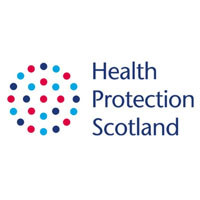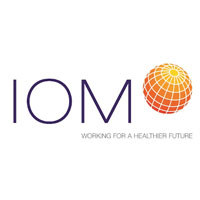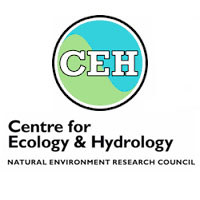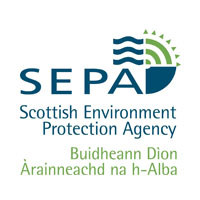We now understand more about the causes and effects of air pollution but need clearer, more compelling ways to explain this to people living in Scotland so they make everyday transport choices that reduce air pollution, especially in urban areas.
Overview of the project
The project was a collaboration between Health Protection Scotland (HPS), the Scottish Environment Protection Agency (SEPA) and Health Scotland (HS) with funding from Scotland’s environment web through the European Environment LIFE programme. The overall aim was to develop key messages around road transport-related emissions to promote improvements in public health for stakeholders, including:
- The general public
- employers
- industry and organisations
- politicians and government institutions.
This webpage outlines the findings from the project partners listed below.
The project consisted of:
- Two evidence reviews, which covered:
- Health and well-being impacts of air pollution
- air pollution and behaviour change in relation to modifying people’s choices of personal transport.
- Two workshops which covered:
- Development of a modified DPSEEA (Drivers, Pressures, State, Exposure, Effects, Actions) model to identify links between air pollution and health
- use of behavioural change tool ISM (Individual, Social and Material) tool to structure outputs.
Key messages
The group will be carrying out further work on making best use of the key messages to influence attitudes, decisions and behaviours. Some examples of the key messages are:
- Air pollution comes from many sources, natural and man-made, but road traffic-related air pollution (TRAP) is a major source of preventable air pollution affecting everyone’s health.
- Air pollution is bad for health and shortens life-spans for everyone. It is especially bad for the young, elderly and people who are already ill with heart and lung conditions, increasing their need for treatment from GPs and hospitals and adding to the costs to the health service.
- Air pollution is often worst in inner city deprived areas, worsening existing inequalities in local environment quality and human health.
- Action to reduce the use of personal road transport and so reduce traffic related air pollution supports measures to improve health by encouraging increased physical activity and improved fitness.
- Reducing traffic related air pollution can improve our sense of well-being as well as our physical health and the quality of the environment, so promoting a better, fairer Scotland.
- Include walking and cycling as part of your everyday travel habit and so get fitter, at the same time as reducing traffic related air pollution to improve the air we all breathe.
- Encourage and support your staff and the people you deal with in changing their travel habits to healthier and less polluting options
- Traffic-related air pollution and its health impacts are preventable, so both local and national government need to shape the places where we all live and work to make healthier travel habits the natural choice.
Background
We all contribute to, and are exposed to air pollution. The Scottish Government recognises that clean air is essential for our health and well-being and is demonstrating its commitment through the Clean Air for Scotland (CAFS) Strategy. One of the objectives of the LES is:
"A Scotland where all are informed, engaged and empowered to improve air quality".
This project contributes to this objective with the overall aim of developing key messages for use to promote improvements in air quality and in public health, and thus contribute to addressing health inequalities in Scotland.
Literature review
Summary of the evidence reviews
The IOM Literature Review Report (PDF) presents the findings from the two evidence reviews of ‘health impacts of air pollution’ and of ‘behaviour change related to people’s preferred choices of personal transport’.
Evidence review - ‘What are the health and well-being impacts of air pollution?’
This evidence review was to investigate air pollution, health and well-being. The evidence surrounding air quality and health is well developed and the adverse health effects of specific traffic pollutants well studied as well as the effects of traffic pollution mixture as a whole, including living close to busy roads. However, results from the literature review of well-being and air pollution showed a scarcity of evidence in this area.
Evidence review - Behaviour change in relation to transport behaviours
This review examines behaviour and behaviour change in the context of air pollution associated with transport use. This improves the evidence on air pollution in Scotland in particular in relation to drivers for behaviours in relation to transport and active travel. One of the main objectives of this review is to inform the development of key messages which will be aimed primarily at effecting behaviour change in the use of typical road-transport and to encourage use of less polluting forms of personal transport.
Workshops
Scottish Urban Air Quality Steering Group (SUAQSG) agreed to focus on air pollutants associated with road traffic, as this is one of the biggest sources of poor air quality in our towns and cities. A group of experts from health, the environment and transport were invited to workshops. The first workshop explored three themes using a modified DPSEEA (Drivers, Pressures, State, Exposure, Effects, Actions) model surrounding different aspects of air quality:
- Particulate matter (one of the groups of pollutants generated by road transport)
- the proximity of people and pollutants
- public transport.
The second workshop used the ISM (Individual, Social and Material) tool to frame discussions and structure outputs.
Research partners
The partners involved in this research were:
Professor George Morris, Consultant in Environmental Health
Supporting research information
Supporting information that was used in the project:
This page was added on 03 Oct 2016
Adobe Acrobat Reader is the free, trusted leader for reliably viewing, annotating and signing PDFs.
Download Adobe Acrobat Reader






